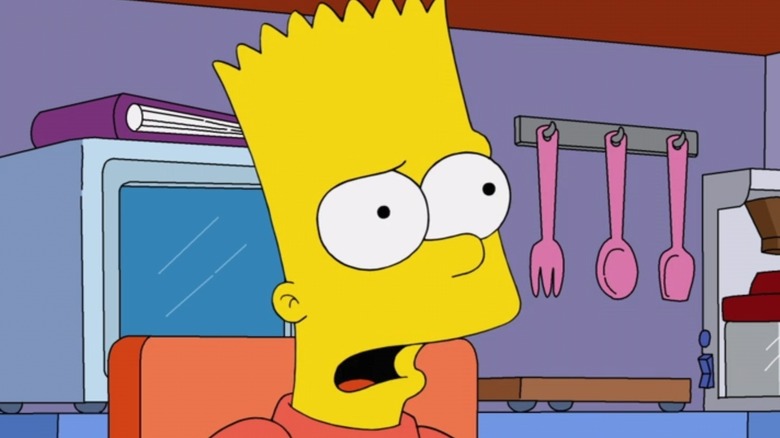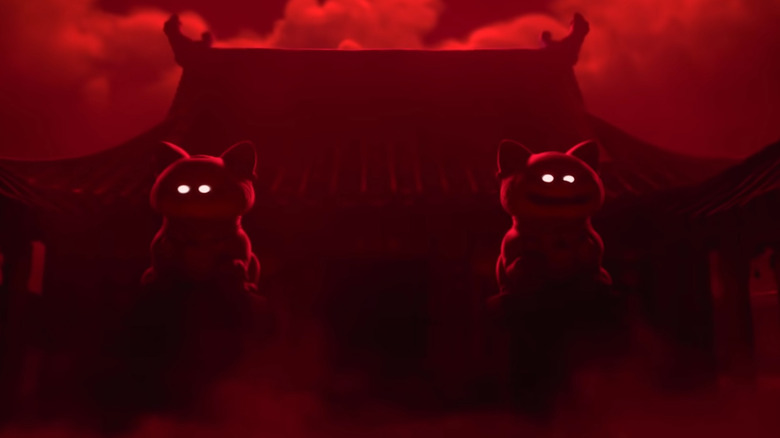The Simpsons Reference You Likely Missed In Turning Red
In "Turning Red," which is the latest in a long line of animated movies produced by Pixar, a teen girl named Mei Lee (Rosalie Chiang) discovers that, because of a curse on her family, she transforms into a red panda whenever she feels strong emotions. While that aspect of the narrative drives the film for the bulk of its runtime, "Turning Red" is peppered with Easter eggs throughout. For example, when the sky becomes visible during a rooftop chase scene, it's almost identical in appearance to the sky pattern that adorns the walls of Andy's bedroom in the original "Toy Story." Furthermore, the movie's credits contain the sequence A113, which is a classroom number at the California Institute of Arts referenced in a number of other Pixar moves.
While these are both more-or-less inter-studio references, some viewers may have missed a moment in which "Turning Red" nods to another, entirely unrelated animated work, invoking the names of two characters from "The Simpsons."
Bart and Lisa — or their names at least — are in Turning Red
Early on in "Turning Red," viewers learn that Mei's family takes care of a temple built to honor their ancestor Sun Yee. Eventually, Mei finds out that Sun Yee was the first woman in her family afflicted with the red panda curse she inherits. This is foreshadowed by the fact that at the entrance to the family temple stand two red panda statues. When Mei visits the temple, she greets these statues, referring to them as Bart and Lisa. This pairing of names, of course, is almost surely intended to remind viewers of Bart and Lisa from "The Simpsons."
"Turning Red" takes place in the early 2000s, and features some artifacts true to the era. For example, Mei carries a period-appropriate Tamagotchi on her backpack. Since Tamagotchis are real in "Turning Red," it wouldn't be a stretch to presume that "The Simpsons" also exists in the world of the film. Mei, then, may well have chosen those names for her family' statues because she's a fan of "The Simpsons" herself, meaning that this moment both nods to an animated classic, and gives viewers some insight into the popular culture Mei happens to enjoy.

